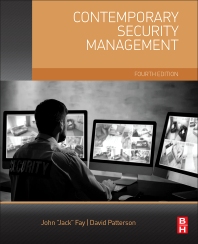The share of CEOs forced out of office for ethical lapses has been on the rise, according to a new study, which shows that forced turnovers due to ethical lapses rose from 3.9 percent of all successions in 2007–11 to 5.3 percent in 2012–16 — a 36-percent increase, due in large part to increased public scrutiny and accountability of executives.
The 2016 CEO Success Study noted that the increase was more dramatic at companies in the U.S. and Canada. Forced turnovers for ethical lapses at these companies increased from 1.6 percent of all successions in 2007–11 to 3.3 percent in 2012–16 — a 102 percent increase. In Western Europe, the share of CEOs forced out for ethical lapses increased to 5.9 percent from 4.2 percent, and in the BRIC countries, to 8.8 percent from 3.6 percent.
Five Trends Shaping CEO Accountability
- Public opinion: Since the financial crisis of 2007–08 and the Great Recession that it ignited, confidence and trust in large corporations and CEOs has been declining; the public has become more suspicious, more critical, and less forgiving of corporate misbehavior.
- Governance and regulation: The rise of public criticism of executives and corporations has translated directly into regulatory and legislative action, and companies in the U.S. and many other countries have moved to a zero-tolerance approach toward bad behavior in the C-suite.
- Business operating environment: Companies increasingly are (1) pursuing growth in emerging markets where ethical risks, such as the possibility of bribery and corruption, are heightened, and (2) relying on extended global supply chains that increase counterparty risks.
- Digital communications: The use of email, text messaging, and social media has created new risks for ethical lapses. A company’s digital communications can provide irrefutable evidence of misconduct, and their existence increases the likelihood that a CEO will be held accountable.
- The 24/7 news cycle: Unlike in the mid- to late 20th century, when most executives and companies could maintain a low public profile, today the lightning-fast flow of Web-based financial news and data ensures that negative information travels quickly and widely.
- CEO turnover: CEO turnover at the world’s largest 2,500 companies decreased from its record high of 16.6 percent in 2015 to 14.9 percent in 2016, due largely to the drop in merger and acquisition activity. CEO turnover was highest in Brazil, Russia, and India, at 17.2 percent, followed by Japan (15.5 percent) and Western Europe (15.3 percent) and China (15.2 percent). CEO turnover fell in every region we studied except for the U.S. and Canada.
- Women CEOs: There were 12 women globally appointed to the role of CEOs in 2016 — 3.6 percent of the incoming class. This marks a return of the slow trend toward greater diversity that had been in place over the last several years, and a recovery from the previous year’s low point of 2.8 percent. The share of incoming female CEOs was highest in the U.S. and Canada, rebounding to 5.7 percent after falling for the previous three years. Five industries — healthcare, industrials, information technology, consumer staples, and telecom services — did not have a single incoming female CEO in 2016.









